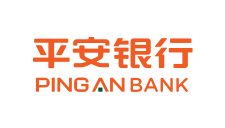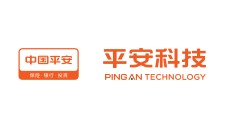RPA Robee
RPA Robee is a process automation robot independently developed by Ping An Technology. By simulating human operation, it provides the lowest cost and fastest solution for manual operation replacement. With Robee, enterprises can efficiently handle intensive and repetitive work in high quality on user interface of different business systems, bringing advantages of manpower release and business efficiency improvement.
Value Proposition

Cloud service
All applications and data are deployed in the cloud. The client is protected from problems in local deployment and resources sharing.

Business-friendly
The platform provides diverse controls, which enable users to customize applications that fully meet business demands and improve management benefits.

Open ecosystem
In the future, every user with operating skills will be able to produce and release RPA applications on the platform.

High scalability
Open interface framework enables users to continuously expand RPA functions and make RPA even smarter.
Use Cases
- Finance
- Human resources
- Administration
- Banking
- Insurance
-
Invoicing: RPA can be used to collect, fill in and check information, split tables, print and perform many other tasks. It replaces manual operations when dealing with mass volumes of work such as proofreading, recording, processing charts and other repetitive tasks. As well as delivering efficient and high-quality performance, it also guarantees nearly 100% accuracy.
-
Scenario: In the past, all information generated in offline processes had to be manually entered into the HR system. Now, RPA can be used to enter job applications and resume information, sign approvals, salary, and recording job entry information. RPA integrates all tasks of the HR process into one single Excel file and saves the need for repetitive filling. It automatically searches for resumes and downloads suitable resumes to corresponding folders. It collects and summarizes interview feedback and automatically initiates follow-up reports. It then sends email offers or automatically processes requests for test results.
-
Scenario: In the past, performance management staff had to proofread, record, inspect and process information manually. RPA can perform group inspection and create ranking groups according to various organizational ranking charts. It can also automatically check and access inspection groups.
-
Scenario: RPA replaces manual labor in proofreading, calculating and recording information, as well as maintaining and processing the HR system data. It can identify candidates for promotion and send the list of candidates to organization leaders for approval, and then update the HR system data after receiving confirmation.
-
Scenario: RPA replaces manual labor in receiving application emails, recording sign-in information, filling in data, and conducting online satisfaction surveys. It transfers all processes into online operations and, through automation, reduces the time needed by manual operation by 87%.
-
Automatic reminder of online approval: Use RPA to provide timely reminders of reports that have been left unprocessed for long periods. It enables the user to control operation frequency and manage the effectiveness of reports. It automatically reminds the responsible person to process businesses tasks, thus improving work efficiency.
-
Download client image: In the past, downloading and verifying documents had to be performed by employees manually. Now RPA can automatically read data and information, log in to the business platform and conduct queries. RPA is able to query, download and verify image files and automatically report abnormal situations which will significantly improve efficiency.
-
Financial product configuration: Use RPA to create a product library, import in batch new types of product and automatically maintain a library of effective product types. Use RPA to perform routine works such as searching, recording, selecting and transferring data, and automatically report abnormal situations. It is fast, efficient and able to achieve full process automation.
-
System health inspection: Inspection tasks performed daily by engineers can be handed over to RPA. It shortens inspection and verification times from nearly half an hour to just 3 minutes, saving on labor costs and raises efficiency.
-
Flight delay insurance: Use RPA to connect external data and automatically query customers’ insurance policy information. The whole process can be completed by RPA and requires nearly zero human intervention which significantly accelerates claim settlements. The user experience is greatly improved because RPA transforms claims settlements from passive processing to active filing.
-
Property insurance client service: Using RPA to connect the client service system will raise the efficiency of processing business tasks and querying information. It deals with the tasks of insurance sales, filing claims and reviewing statuses simultaneously. It can also be connected to diverse backend systems to accelerate overall task processing efficiency.
-
Car insurance underwriting: Enhance process control with RPA. It complies with policy requirements, achieves compliance and prevents the application of low valuations and discounts that violate regulations.
-
New client inspection: When a client has several insurance products which are managed in different systems respectively, RPA can be used to create a virtual universal data query platform to search client data in multiple product databases and ensure discounted policies comply with regulations.
-
Reinsurance business: Use RPA to process policies issued during the current month. RPA automatically reads data on completed reinsurance policies in the public file folder, records the data into the reinsurance system, records process results and creates a list accordingly. RPA can also perform audits and tracks businesses according to the feedback of such process results.
Success Stories

Ping An Property & Casualty Insurance
Ping An Property & Casualty Insurance
Ping An Property Insurance uses Ping An Technology RPA to realize process automation of employee performance inspection and promotion, smart finance, EOA effectiveness reminder, car insurance renewal querying and other business tasks. RPA helps the company significantly reduce manual costs, lower error rates and improve process efficiency.

Ping An Bank
Ping An Bank
Ping An Bank uses Ping An Technology RPA to promote the automation of financial product configuration, client image processing, system health inspection and other business tasks. RPA helps banks to improve process efficiency and lower operating costs.

Ping An Technology
Ping An Technology
Through R&D of RPA, Ping An Technology promoted process automation of recruitment, setting salary levels and training, EOA effectiveness reminder and other business tasks. RPA helps Ping An Technology to save on labor costs, working time and improve process efficiency.

Ping An Securities
Ping An Securities
Ping An Securities has introduced RPA Robee to monitor data and file reception in real time, replace manual multi-node interactive operation of systems and data, and automatically and timely conduct settlement with banks on non-working days, thus improving the accuracy of data checking and automating work flows.

Ping An Financial Services
Ping An Financial Services
Ping An Financial Services has introduced RPA Robee to assist the system in upgrading and achieving 24/7 data migration, which cuts the previous one-year manual migration by 75% to ensure 100% completion of data migration in an efficient manner.
Functionality
-

RPA market
Open RPA market provides rational categorization, smart retrieval, flexible release and subscription functionalities and facilities internal and external sharing. Establish RPA ecosphere with cloud services. In the future, it will enable users to achieve profits by releasing RPA and connecting with third party RPA.
-

RPA usage
It provides multiple RPA usage methods. Users can enjoy unattended operation in all processes and benefit from the value delivered by automation. It supports manual operation, timed operation, remote control and smart scheduling.
-

RPA creation
It provides graphical interaction, encapsulated controls and an open framework. With diverse controls and a user-friendly interactive interface, everyone is able to create their own RPA, and no development experience is needed.
-

RPA management
Manage the usage status of RPA. Visualization with diagrams and charts deliver intuitional insight of real situations. Multi-dimensional and flexible access control protects the enterprise’s intellectual property. Maintenance is initiated with one click. You can easily manage different versions and switch statuses quickly.
Tariff and Pricing
The price is determined by the quantity you purchased, and there will be more discounts with more purchases.
Design Robot
¥16,950
/year
Execution Robot
¥5,650
/year
Control Robot
¥90,400
/year
Email us
cloud@pingan.com
Online customer service
Instant reply
Technical Support
cloud products
Recommended Services
Big Data Computing
Big Data Search and Analysis
Big Data Application
Big Data Solutions
Domain Name and Website
Platform
Communications
Intelligent Management
Auto Service
Management & Monitoring
Middleware
Enterprise Service Solutions
Hybrid Cloud Solutions
Big Data Solutions
AI Solutions
Security Solutions
Private Cloud Solutions
Financial Solutions




